-
Title (Dublin Core)
-
Blueprint for invasion
-
Article Title and/or Image Caption (Dublin Core)
-
Title: Blueprint for invasion
-
Subtitle: Careful preparation and long, elaborate training lie behind a landing on a fortified enemy coast
-
extracted text (Extract Text)
-
SOMEWHERE off a hostile coast, in the
damp cold an hour or two before day-
break, infantrymen clad in heavy water-
proof suits take their places in shallow-draft
assault boats. They may embark from an
island or other land base within striking
distance of their objective, or from trans-
ports screened by a naval force. Bigger as-
sault craft, resembling vehicular ferryboats,
are loaded with tanks and field guns. Every-
thing has been rehearsed: in a short time
the assembled armada is churning toward a
designated point on the coast. The curtain
has risen on the drama of invasion, but the
stage is still dark.
If luck is with the attackers, they may
catch the enemy napping and the first units
may land without opposition. But at some
point in the operation hell breaks loose. The
sky explodes in orange flares amid the rattle
of machine guns and the bursting of bombs
and shells. The assault boats hit the beach,
their bows drop like drawbridges and the
men and tanks swarm ashore. The leading
units snip the barbed-wire entanglements
with cutting tools and clear the way for the
main attack. Assault engineers blast barri-
cades and open roads for heavy equipment.
Mortars and fieldpieces set up on the beach
cover the advance.
This is aero-amphibious war, and the ac-
tion is not confined to sea and land. Air-
planes fight overhead. Parachute troops
drop from transport planes and infantry-
filled gliders are towed into the zone of ac-
tion. As the operation develops every type
of soldier takes part. Smoke screens are laid
by chemical-warfare units to conceal the
successive waves of assault boats which,
hour after hour, ferry infantry, armored
forces, signal and medical units, and detach-
ments of all the arms and services to the
disputed beach. The issue is decided in a few
hours: either the attackers are driven back
into the sea with disastrous losses, or they
have thrust the spearhead of invasion into
the enemy's coastal defense line.
Since the fall of France and the evacua-
tion at Dunkirk, the military experts of the
press and radio have been warning us that
landing on a hostile coast is the most costly,
difficult, and hazardous of military under-
takings. No doubt there is much truth in |
these cautions—but they did not worry the
Germans too much when they wanted Crete,
nor the Japs in their leapfrog advance from
Formosa to New Guinea. Nor have they
ever worried the United States Marine
Corps. With their rubber assault boats,
amphibious tractors, transport planes, and |
gliders, the Marines have pioneered in many
phases of invasion technique The only trou-
ble with them is that they are a compara-
tively small outfit, and large-scale invasion
calls for quantity as well as quality. Our
landings in Africa have shown how well
their technique can be applied on a large
scale.
The Japs went into the invasion business
in a small way in China and graduated into
the big time later. They developed a definite
technique which is worth studying. In all
cases they first reconnoitered landing sites
carefully from the air. Besides, they had
been there before, fishing and so on: thus |
they knew the country and had good con-
nections ashore. When they came to cap- |
italize on their preparations it was usually
with a task force comprising a battleship
or heavy cruiser, an airplane carrier if re-
quired, destroyers, and enough transports to
carry about two divisions (40,000 men) with
normal equipment, including 75-millimeter
field guns and 105-millimeter howitzers, and
light tanks. Almost always they arrived
just before dawn, on a day when high tide
came-soon after dawn. The battleship stood
out between three and four miles, the de-
stroyers lined up about half a mile out, the
transports were in between. The troops
climbed down the sides of the transports
into landing boats, or, in some cases—this
was an original idea which they apparently
developed from the design of whaling ships
—side hatches opened and the boats, al-
ready loaded, slipped into the water.
The landing barges comprised several
types, the largest holding about 120 men,
while smaller ones carried 50 or 60 men
apiece. Speeds were about 10 knots. The
boats were generally armored in the bow
and stern. Those carrying tanks or artillery
were equipped with a bow which could be
lowered, somewhat like a bascule bridge,
forming a ramp down which the equip-
ment could be wheeled off.
The boats also had other advantageous fea-
tures, such as double keels for stability
when they were beached. They were, of
course, shallow-draft craft which could get
high up on the sand before grounding. One
type was a hydroplane, airplane-propeller-
driven, for use in creeks, weed-bound water,
and the like.
The Japs used their men and equipment
skillfully, taking full advantage of surprise
and secrecy. They always saw to it that
they had air superiority. By the time they
were discovered they usually had a sizable
force on shore and under cover. Then their
aircraft were swarming overhead and the
guns of the fleet protected the balance of
the landing.
The Germans at Crete relied more on air
power than on such a balanced combination.
Actually they likewise started with a sea-
borne force, but their intelligence service
proved deficient in this instance: the strength
of the British was several times greater
than had been estimated. The Germans
then shot the works in the air; they were
able to do this because enough land-based
aviation was available and preparations had
been made for just such a contingency.
They came in gliders carrying 12 to 30 sol-
diers apiece, towed by lumbering old trans-
ports which were perfectly suited for this
new job. As many as 10 or 11 gliders were
strung out behind each towing plane. They
also used parachute troops, and, when they
had captured an airport, ferried their infan
try across the water in transport planes. By
these methods, in a few days they landed
15,000 troops on the island, equipped with
rifles, light and heavy machine guns, field-
pieces, medical supplies, and about every-
thing else they needed.
This operation has been carefully analyzed
by our Army. Lieut. Gen. Henry H. Arnold,
the chief of our Air Forces, refers to it as
the “awful lesson of Crete”—the lesson be-
ing that neglect of air power as a para-
‘mount factor in invasion is a fatal error, and
that we must not only take into account air
power as it exists today, but beat the enemy
to the punch in new developments.
The general pattern which emerges is
fairly clear. To get a foothold on a hostile
coast, and to hold and enlarge that foothold
with reasonable assurance of victory, one
must have air superiority, naval superiority,
and ground superiority. The three factors
are not concurrent; more precisely, the re-
quirements are initial air and naval sus
periority, with a view to converting poten-
tial land superiority into actual land su-
periority in the course of the operation.
One may win with only initial air superior-
ity, as the Germans did at Crete, but to do a
workman-like job, with the utmost economy
of men and matériel, one should possess
preponderance in all three elements. And of
course these elements are not to be regarded
as disparate. When the opposed forces areanywhere near equal, the deciding factor is
the co-ordination between air, sea, and land
forces, These must be under unified com-
mand. Landing operations are a peculiarly
clear illustration of the principle that the
strategic whole is all that counts—the parts
matter only in so far as they contribute to
the whole.
In our own Army progress in this direc-
tion 1s reflected in many ways. One which
stands out is the organizational setup of the
various arms. As long ago as November
1941, Lieut. Gen, Hugh A. Drum argued that
the “present watertight compartments” ex-
isting between air support, armored forces,
and other arms must be broken down. They
are being broken down. The basic classifica-
tions still exist, but there are numerous new
combinations which at first sight are rather
puzzling. We find, for instance, the En-
gineer Amphibian Command—ot the Army
—recruiting sailors, commercial fishermen,
and marine specialists of various kinds, the
purpose being to get fighting men ashore
Where they can attack the enemy, and to
maintain the craft which will do the job.
This command alone is recruiting men from
40 different flelds—automobile service men,
crane operators, lifeguards, plumbers, sheet-
metal workers, and surveyors being a few of
them. Then we have a Special Service Force
equipped to engage in parachute, marine
landing, mountain, and desert operations.
Also to be mentioned is the Airborne Com-
mand which links the Air Forces and the
Ground Forces, but belongs organizationally
to the latter, while the Troop Carrier Com-
‘mand, likewise a bridge between Air Forces
and Ground Forces, belongs organizational-
ly to the former.
After a little study one gets the logic of it.
These hybrid military units, and their inter-
connections with the Navy, reflect the in-
creasing complexity of modern warfare, the
need for teamwork and continuous co-ordi-
nation among the arms and services. The
more specialized the soldier's task becomes,
the more necessary it is to integrate the ef-
forts of the specialists so that they will
serve that strategy of the whole which, on
pain of disaster, must never be neglected.
And the orientation of the whole complex
setup is toward the invasion effort and what
will follow.
The same drive is reflected in war indus-
try and in Army and Navy equipment. A
single firm advertises among its products
motor torpedo boats, steel Diesel-powered
tank carriers, crew-carrying landing boats,
motor-equipment landing boats, armored
combat boats, shore patrol craft, anti-sub-
‘marine motorboats, steel and wood tugboats
and barges, and “amphibious equipment.”
In the air, the Army is training men in
transport gliders which will carry nine fully
equipped soldiers. Another type carries 13
infantrymen in addition to the pilot and co-
pilot. These gliders drop their wheels after
taking off and alight on skids. Experimen-
tation is in progress with a view to picking
up gliders from the air after they have
landed in enemy territory. Cargo planes can
now fly antiaircraft guns, 75's and 105's,
reconnaissance cars, and about everything
except heavy artillery to the combat zone.
They carry troops as well —the Curtiss-
Wright C-46, the “Commando,” holds a sub~
stantial number of fully equipped soldiers.
Among eombat cratt, there are types like
the North American P-51, the “Mustang,”
which are especially designed for hedge-
Hopping and close support of troops. One of
these days we shall see them swooping over
the beaches clearing the way for landing
parties and scouting the terrain further
back.
No one in the armed forces is under any
illusions as to what we shall be up against
when the big push starts. Undoubtedly the.
landings necessary to open a second front in
Europe will be exceptionally difficult. The
Germans have had plenty of time to fortify
the likely spots along the Channel coast and
elsewhere. It is quite possible that published
photographs of German gun emplacements,
batteries, blockhouses, and redoubts have
been deliberately allowed to filter through in
order to give the leaders of the United Na-
tions pause; certainly these steel and con-
crete strongholds are a formidable obstacle.
Some of them appear to be so massive that
it is doubtful whether random bomb hits
from the air would penetrate them. Others
have been dug into the sides of hills so that
they are clearly invulnerable from above.
Certainly there is a big difference between
making a landing in the face of one of these
monstrous constructions, and, for example,
the uncontested or weakly contested Japa-
nese landings in the Pacific.
But does that make the coast secure
against invasion? To answer the question
let us transfer the scene to the United States
and see how it looks from the defenders’
viewpoint. The distance from the resort is<
land of Santa Catalina to the nearest point
on the Southern California coast is exactly
the same as the width of the Straits of
Dover—20 miles. The California coast line
is well fortified, and back of the fortifica-
tions there is a superb network of roads, all
kinds of airports and aircraft factories, and
probably more heavy industry than in some
of the corresponding areas in France. Yet
how secure would the people of Los Angeles
and their defenders feel if Catalina were as
big as England and the Japs were looking
across the channel at the Palos Verdes
Hills? How secure would they feel if the
Japs had air superiority and there was little
or no prospect of taking it away from them
in the calculable future?
The fact is that coastal fortifications have
a definite but limited utility. Their big guns
can be used against shipping, including
naval vessels and transports. As long as
these batteries are active the United Nations
cannot cover a landing with naval guns;
they cannot dock transports in existing har-
bors. But against small and medium-sized
landing boats, barges, and lighters, heavy
artillery is practically useless. The boats
will come in close under cover of darkness
and they will land under smoke screens. The
big guns cannot be trained on the water
close to the shore or on the shore itself. The
defenders will have to rely on light artillery
and small-arms fire to repel the actual land-
ings; thus the situation will be much like
that at points on Luzon where we had such
defenses—and the Japs took them.
Nor is a seacoast a neat geometrical pat-
tern, every foot of which can be covered by
fixed or mobile artillery. Seacoasts were not
designed for the security of the Nazis or of
anyone else. They are complex, irregular
configurations where resolute attackers who
know the terrain can find innumerable coves,
bays, inlets which at a given moment may
be undefended or inadequately defended.
The attackers will naturally avoid the ob-
vious spots; they will know that a difficult
landing site—difficult in the sense of terrain
—may be their best bet because of the ele-
ment of surprise and the unpreparedness of
the enemy.Gaining footholds on the beaches is the
first stage of the invasion. Some of these
footholds will be lost, some will be held. The
second stage calls for reduction of heavy
fortifications at critical points, so that the
third stage—the acquisition of a deep-water
harbor—may become possible. The fortifica-
tions can be reduced. Anything which can
be built can be blown up. If it can't be
blown up at long range it can be blown up
from alongside. The Germans themselves
proved that when they took the multiple
fortress of Eben Emael, near Liege, in the
spring of 1940. These installations were said
to be proof against artillery fire, and in fact
they held out to the end against all the can-
non the Germans were able to train on them.
But they could not hold out against engineer
combat units armed with explo-
sives, advancing under cover of
continuous artillery fire and utiliz-
ing shell craters for cover until
they reached the blind spots close
to the walls of the fortifications.
We have plenty of dynamite and
TNT, and American engineers are
just as tough as German engineers
—maybe tougher. The fortifica-
tions will be assailed from the
flanks by lateral landing parties,
from the rear by airborne troops,
and at a given stage they will face
frontal assaults by new landing
parties. These redoubts are set
back some distance from the shore,
usually on elevations commanding
the sea. The approaches will be
churned up by bombers until the
terrain will look like a series of
gravel pits. There will be plenty of
cover for the later landing parties.
At the same time, naval units may
engage the fortresses in artillery
duels; the close-up attacks already
in progress will compensate for the
advantage shore batteries normal-
ly enjoy over equivalent calibers on
the water. The fortifications will be
subjected to simultaneous assaults
from the air, the sea, and the land.
Where they are immune to normal
vertical and dive bombing, low-fly-
ing aircraft may loose projectiles,
which will bring them in at angles
close to the horizontal, like tor-
pedoes launched at warships.
The defenders will always be
able to repel a single landing at-
tempt. But they will have to con-
tend with multiple raids—perhaps
a dozen or more at a time. Even in
the Dieppe operation, which in
retrospect will seem like little more
than a threatening gesture, the
British were on six beaches at once.
Of course,
some of the multiple raids may be only
demonstrations or feints, but the enemy will
have the pleasure of deciding in each in-
stance whether that particular assault is or
is not the spearhead of a full-scale invasion.
For every one that seems at all menacing
he will have to set his transportation system
in motion to bring up supplies and reinforce-
ments, and use up valuable rolling stock to
redistribute his forces. In the meantime
the bombers will be busy overhead, plaster-
ing communication lines and airports, and
the parachutists will be raising hell in their
own fashion. The enemy will need a great
deal of matériel and large forces in many
places at once, and if they run out of re-
serves at any one point they will face dis-
aster. Once 2 major break-through occurs,
penetrations and envelopments will follow
over a wide front. Those strongholds that
still hold out will be isolated and dealt with
at the invaders’ own convenience.
The losses of the attackers in the early
stages will be huge. At Dieppe the Allied
division which was engaged lost about half
its effectives, in spite of excellent air sup-
port. The forces which make the first land-
ings must expect to sustain losses of this
magnitude. With all the reconnaissance, di-
versionary moves, feints, and harassments
that can be inflicted on the enemy, the prin-
cipal penetrations will just have to be bulled
through. In some of their landings, when
they encountered strong opposition, the Japs
accepted heavy initial losses with equanim-
ity. Americans will certainly not be out-
done in this respect.
In all likelihood, the attacking general
staffs will have a pretty good idea of where
the major break-through will occur, and
their reserves will be disposed accordingly.
But they will have to be prepared to change
their plans at a moment's notice. Much also
will depend on the subordinate commanders.
No two landings are alike and the ability of
the attacking troops to adapt themselves to
conditions quickly and intelligently is just as
important as good staff work and planning.
Landings are always fast-moving situations,
and only dynamic leadership on the spot can
seize opportunities as they arise and utilize
gains to get more gains. And all possible
contingencies will have to be provided for.
It is perfectly possible, for example, that
when the Axia forces are in a desperate po-
sition they will resort to the use of gas
wherever wind conditions permit.
Nor, when we capture a harbor which will
serve in this war as St. Nazaire served in
the First World War, can we expect to re-
ceive it intact with the compliments of the
former occupants. They will wreck it as
completely as they can before they evacuate,
and they will be in a position to do a thor-
ough job. About all we can expect to get is
land, ‘water, and debris. But that will be
enough. The Army's engineer units, and
the special Navy construction detachments,
known as Seabees, will rebuild what has
been destroyed, and add a lot more.
When we have an adequate harbor, the
initial stages of major operations on the
Continent will be over. The logistical prob-
lems accompanying such operations will
then be possible of solution by known meth-
ods. This harbor (or, more likely, harbors)
will be the eastern terminus of a pipeline
which will carry the products of American
war industry to Europe. The Germans will
do their utmost to break the line along its
entire length, and particularly to block its
outlet. It is only prudent to assume that
they will fight as furiously when they are on
the road to defeat as when they seemed to
be headed for victory. This outlet will there-
fore need the strongest air defenses that
modern military technology can devise, for
whatever air power the Germans still pos-
sess will be flung against it. It will have to
be guarded against submarine and surface
attack by nets, booms, and mines. The bat-
teries with which the Germans have ringed
the European coast will have to be dupli-
cated here, Around the invasion area there
will be such a concentration of airfields, AA
and coastal artillery, submarines and anti-
submarine devices, large and small naval
surface craft, merchant ships, transports,
tugs, docks, warehouses, unloading and for-
warding facilities, barracks, troops of all
arms and services, as the world perhaps has
never before seen. But once the machinery
of this gigantic enterprise is in motion the
push into Germany will be in full progress.
-
Contributor (Dublin Core)
-
Carl Dreher (Article Writer)
-
Language (Dublin Core)
-
eng
-
Date Issued (Dublin Core)
-
1943-02
-
pages (Bibliographic Ontology)
-
88-98, 224, 226
-
Rights (Dublin Core)
-
Public Domain (Google Digitized)
-
Archived by (Dublin Core)
-
Matteo Ridolfi
-
Marco Bortolami (editor)
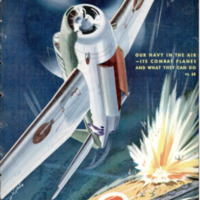 Popular Science Monthly, v. 142, n. 2, 1943
Popular Science Monthly, v. 142, n. 2, 1943
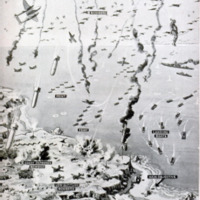 Schermata 2022-02-20 alle 10.30.35.png
Schermata 2022-02-20 alle 10.30.35.png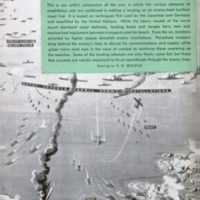 Schermata 2022-02-20 alle 10.30.46.png
Schermata 2022-02-20 alle 10.30.46.png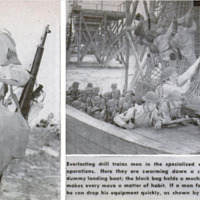 Schermata 2022-02-20 alle 10.30.58.png
Schermata 2022-02-20 alle 10.30.58.png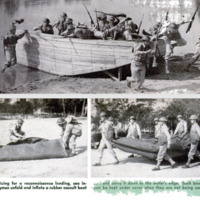 Schermata 2022-02-20 alle 10.31.17.png
Schermata 2022-02-20 alle 10.31.17.png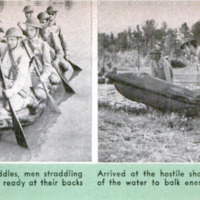 Schermata 2022-02-20 alle 10.31.32.png
Schermata 2022-02-20 alle 10.31.32.png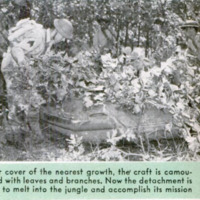 Schermata 2022-02-20 alle 10.31.58.png
Schermata 2022-02-20 alle 10.31.58.png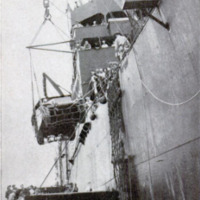 Schermata 2022-02-20 alle 10.32.07.png
Schermata 2022-02-20 alle 10.32.07.png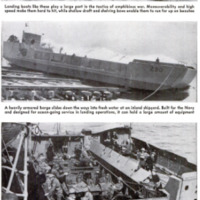 Schermata 2022-02-20 alle 10.32.22.png
Schermata 2022-02-20 alle 10.32.22.png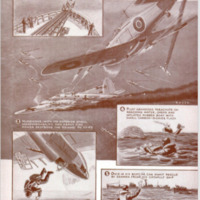 Schermata 2022-02-20 alle 10.32.37.png
Schermata 2022-02-20 alle 10.32.37.png








